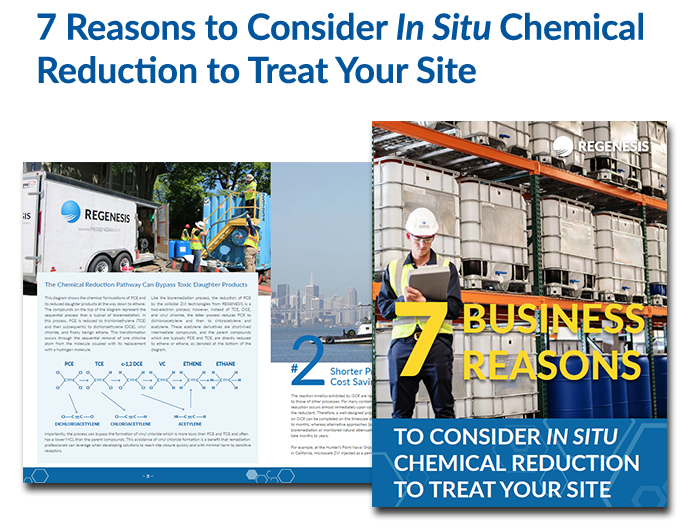This ebook outlines the benefits of in situ chemical reduction (ISCR), an approach that can be highly effective when designing a remedial strategy. Though in situ chemical reduction has been in use for some time, recent technological advances have improved it as a remedial approach.
eBook highlights:
- How ISCR works
- ISCR can lead to shorter project life cycles, resulting in overall cost savings
- How ISCR can improve other remedial approaches
- The difference-making technology of sulfidated, colloidal near-microscale zero-valent iron (ZVI) from REGENESIS
Chemical reduction involves the transfer of electrons from a reductant such as zero-valent iron to a molecule such as a perchloroethylene (PCE), during which the molecule is converted to harmless compounds. A proliferation of remedial technologies based on chemical reductants such as ZVI, which is highly effective against chlorinated solvents, some metals, and other contaminants, has been recently developed. REGENESIS has recently developed the in situ remediation technology S-MicroZVI™, a sulfidated, colloidal suspension of ZVI micro-scale particles less than 5 μm in size that can easily be injected and is chemically reactive in the subsurface.
Complete the form on this page to download the free ebook.


